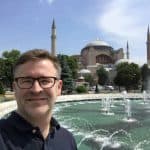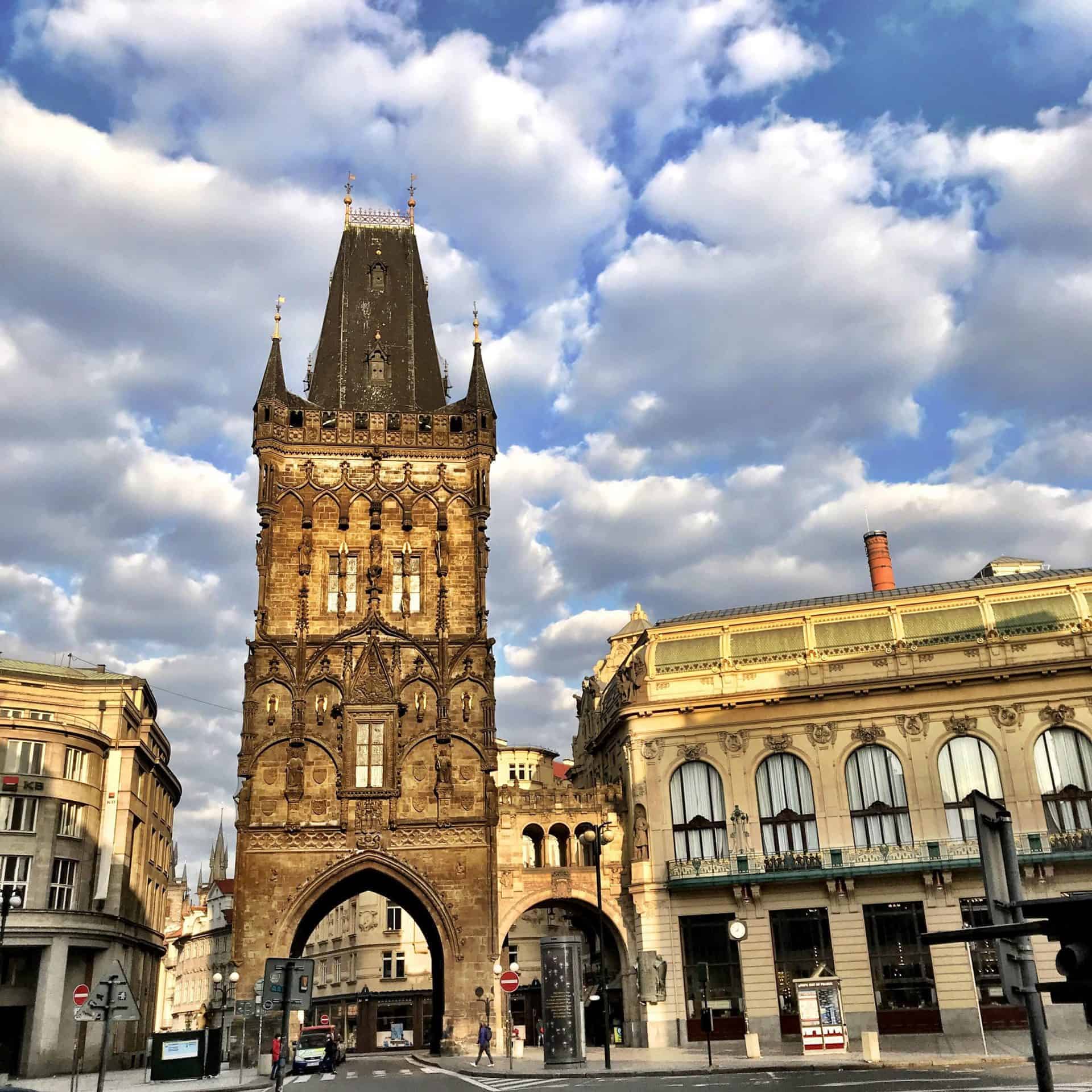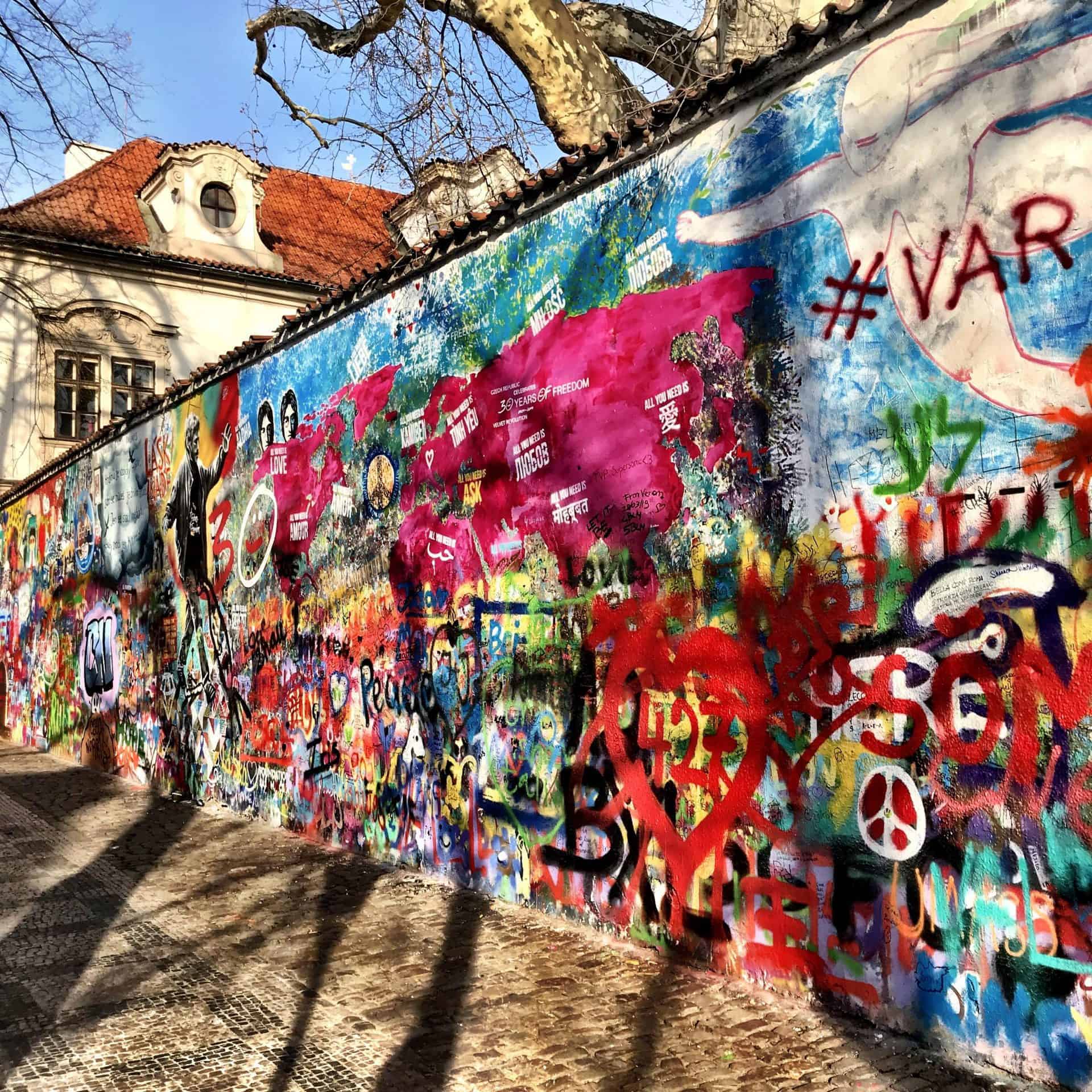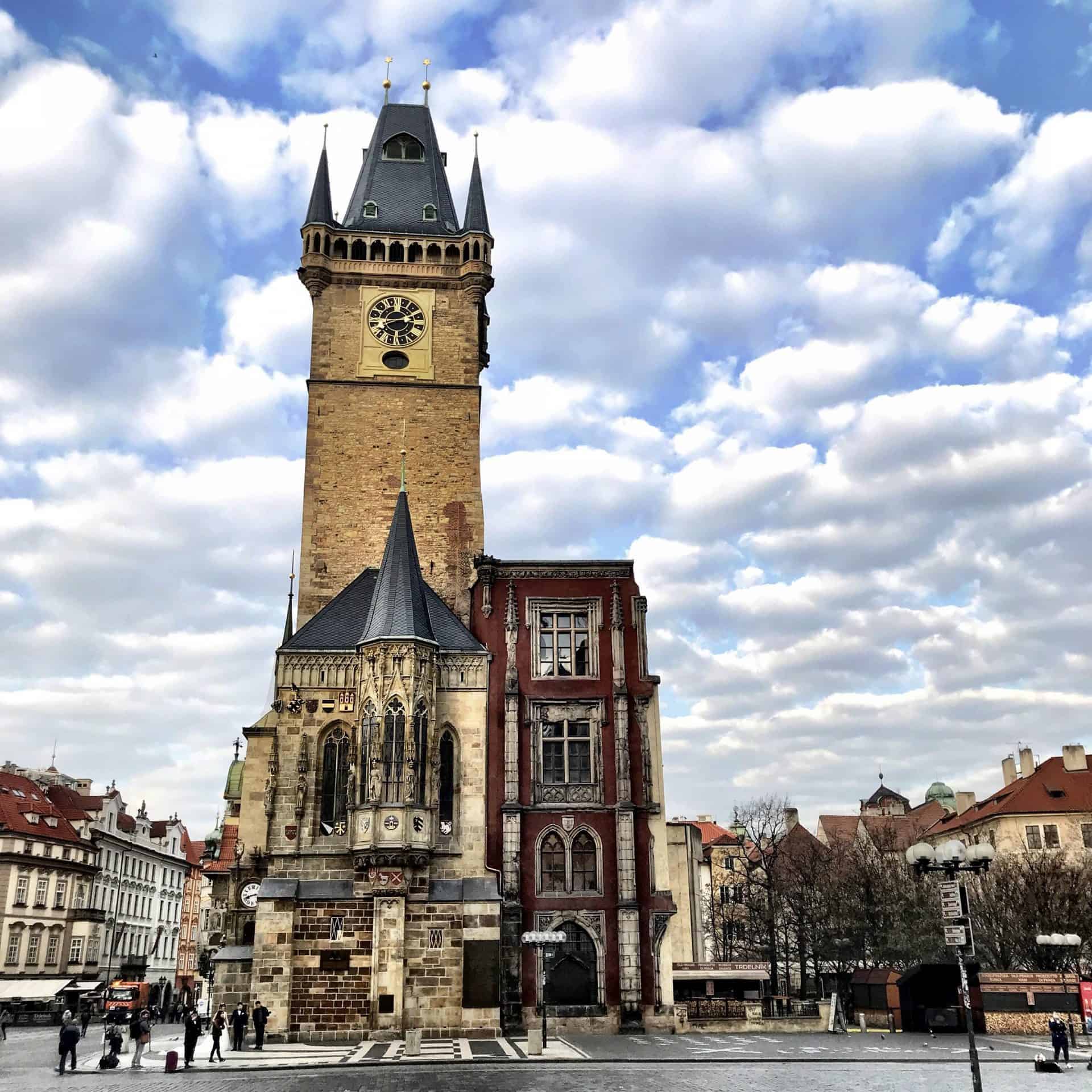On our Essential Prague tour, you will experience the best of Prague’s ancient past and its quirky, modern present – everything from a clock that was accurately tracking celestial bodies in the early 1400s, to a modern, graffiti-covered wall.
Tour Creator
Jeffrey has traveled to nearly 70 countries across all the habitable continents as a columnist and writer for publications including The Wall Street Journal and the Los Angeles Times. He…Read More Bio »
Prague
GPS-directed
Remote Tour Included
1+hr/3hrs(Extended itinerary)
1.5km/3kmExtended itinerary)
Avoid the Crowds
Allows you to explore without having to be shoulder-to-shoulder in a large tour group
Created by an exceptional journalist
Written by a former The Wall Street Journal columnist, who lives in Prague
GPS Directions
Easy-to-follow GPS directions to get you from one point to the next on your tour
Highlights include:
Henry's Tower, Powder Tower, Old Town Square, the Charles Bridge
Remote Tour Included
As with all our tours, a remote tour is included that can be enjoyed from home
Itineraries
Essential Prague – Extended
Essential Prague – Pt 1
Essential Prague – Pt 2
- Statue of King Wenceslas (Wenceslas Square) - The Patron Saint of the Czech Republic, and ruler of Bohemia between 921 and 935. You probably know him as “Good King Wenceslas” from a Christmas carol that’s been around since the 1850s.
- Upside down Statue of King Wenceslas - A different take on Good King Wenceslas – riding an upside down, dead horse. By famous Czech artist David Cerny.
- Melantrich Balcony - This is perhaps the most famous spot in modern Czech history, where Vaclav Havel made an appearance on the balcony in Nov. 1989 with reform-minded, former communist president Alexander Dubcek.
- Prague’s Main Post Office - Gorgeous Pseudo-Renaissance building; vast hall inside with a roof of glass, and the walls painted with vast frescoes. Only closed for 2 hours per day – opens at 2am, closes at midnight. You can wander in a take pics inside … or mail a postcard, if you have one.
- Henry’s Tower - Bell tower for St. Henry’s Church but builders at the time realized the church’s walls were not strong enough to support a bell tower, so they built this one across the street. The highest, freestanding tower in Prague.
- Powder Tower - Dates to 1475, when the foundation was laid, and was originally called New Tower because, well, it was new – and a coronation gift for the sovereign at the time: Vladislav II.
- House of the Black Madonna - First Cubist architecture in Prague, originally built as a department store in 1911.
- Old Town Square- Was once the center of commerce in Prague back in the 13th and 14th centuries.
- Church of Our Lady before Tyn - A stunning example of Gothic church construction, with its twin spires stretching to 80 meters above the square.
- Jan Hus Monument - One of the greatest thinkers/religious philosophers of his day (late-14th / early 15th centuries), who became a prominent Czech religious reformer and the namesake of the Hussite Wars between Christian Hussites and the Holy Roman Empire, the Papacy and monarchs across Europe that bowed to the Catholic Church
- Prague Meridian - A few yards in front of the Jan Hus Monument, look on the ground and you will see a brass plague with Latin and Czech words. This is the Prague Meridian, first used in the mid-1600s to note the arrival of midday. At that moment, a flag was raised to let the local know noon was upon them.
- Astronomical Clock - The clock was operational by 1410 and is the embodiment of medieval art, craftsmanship and the quest for knowledge during Europe’s Renaissance, when science took huge leaps forward. The dials show the time, date, positions of various celestial bodies, astronomical cycles and Christian holidays. Won’t find anything like this anywhere else in the world.
- Charles Bridge - The Gothic-design pedestrian bridge dates to the year 1357 and was called Stone Bridge for many centuries and was built to replace another stone bridge from 1172 that collapsed in a massive flood in 1342.
- St. John of Nepomuk Statue - Along the bridge – the 30 statues, almost all of them saints. Won’t name them all, but will tell you that tourists love to touch the statue of St. John Nepomuk, a priest in Prague during the reign of King Wenceslas IV.
- John Lennon Wall - Begun in 1980 when an unknown Czechoslovakian graffiti tagger painted a lone image of John Lennon and some of Lennon’s song lyrics just after the Beatle was assassinated in New York.
- St. Nicholas Church - Built between 1704 and 1755 atop what was once a 13th century Gothic church that was also known as St. Nicholas. This version of the church reflects what’s known as Prague Baroque, and is considered one of the finest examples of that style.
- Paratroopers apartment - Czech paratroopers who took part in WWII's Operation Anthropoid spent their time holed up in this apartment during the planning stages. It was the only successful assassination of a Nazi official during the war.
- Lesser Town Bridge Tower - Younger than the Charles Tower Bridge on the other end of the bridge – from the second half of the 15th century.
- Piss Sculpture - Another of Czech artist David Cerny’s eccentric sculptures.
- Jan Palach Memorial - Charles University student Jan Palach set himself on fire in January 1969 to protest the Soviet invasion during the Prague Spring of 1968,
- Rudolfinum - Was used as parliament for the newly unified Czechoslovakia in the early part of the 20th century … then as a center for the arts again under Nazi Germany, since, as a Nazi protectorate, there was no longer a Czechoslovakian government anymore … during the communist era was partly used as a gymnasium for nearby secondary schools. Today, it’s home to the Czech Philharmonic orchestra, having come full-circle as a center for arts.
- Old-New Synagoga - The oldest active synagogue in Europe today.
- St. Nicholas Church - Back in Old Town Square. The second St. Nicholas Church we’ve seen today. The interior is considered one of the most beautiful in all of Prague; the chandelier was donated to the church by Russian Tsar Alexander II, the tsar who sold Alaska to the United States.
- Statue of King Wenceslas (Wenceslas Square) - The Patron Saint of the Czech Republic, and ruler of Bohemia between 921 and 935. You probably know him as “Good King Wenceslas” from a Christmas carol that’s been around since the 1850s.
- Upside down Statue of King Wenceslas - A different take on Good King Wenceslas – riding an upside down, dead horse. By famous Czech artist David Cerny.
- Melantrich Balcony - This is perhaps the most famous spot in modern Czech history, where Vaclav Havel made an appearance on the balcony in Nov. 1989 with reform-minded, former communist president Alexander Dubcek.
- Prague’s Main Post Office - Gorgeous Pseudo-Renaissance building; vast hall inside with a roof of glass, and the walls painted with vast frescoes. Only closed for 2 hours per day – opens at 2am, closes at midnight. You can wander in a take pics inside … or mail a postcard, if you have one.
- Henry’s Tower - Bell tower for St. Henry’s Church but builders at the time realized the church’s walls were not strong enough to support a bell tower, so they built this one across the street. The highest, freestanding tower in Prague.
- Powder Tower - Dates to 1475, when the foundation was laid, and was originally called New Tower because, well, it was new – and a coronation gift for the sovereign at the time: Vladislav II.
- Old Town Square- Was once the center of commerce in Prague back in the 13th and 14th centuries.
- Church of Our Lady before Tyn - A stunning example of Gothic church construction, with its twin spires stretching to 80 meters above the square.
- Jan Hus Monument - One of the greatest thinkers/religious philosophers of his day (late-14th / early 15th centuries), who became a prominent Czech religious reformer and the namesake of the Hussite Wars between Christian Hussites and the Holy Roman Empire, the Papacy and monarchs across Europe that bowed to the Catholic Church
- Prague Meridian - A few yards in front of the Jan Hus Monument, look on the ground and you will see a brass plague with Latin and Czech words. This is the Prague Meridian, first used in the mid-1600s to note the arrival of midday. At that moment, a flag was raised to let the local know noon was upon them.
- Astronomical Clock - The clock was operational by 1410 and is the embodiment of medieval art, craftsmanship and the quest for knowledge during Europe’s Renaissance, when science took huge leaps forward. The dials show the time, date, positions of various celestial bodies, astronomical cycles and Christian holidays. Won’t find anything like this anywhere else in the world.
- Charles Bridge - The Gothic-design pedestrian bridge dates to the year 1357 and was called Stone Bridge for many centuries and was built to replace another stone bridge from 1172 that collapsed in a massive flood in 1342.
- St. John of Nepomuk Statue - Along the bridge – the 30 statues, almost all of them saints. Won’t name them all, but will tell you that tourists love to touch the statue of St. John Nepomuk, a priest in Prague during the reign of King Wenceslas IV.
- John Lennon Wall - Begun in 1980 when an unknown Czechoslovakian graffiti tagger painted a lone image of John Lennon and some of Lennon’s song lyrics just after the Beatle was assassinated in New York.
- Lesser Town Bridge Tower - Younger than the Charles Tower Bridge on the other end of the bridge – from the second half of the 15th century.
- Piss Sculpture - Czech artist David Cerny’s eccentric sculpture.
- Jan Palach Memorial - Charles University student Jan Palach set himself on fire in January 1969 to protest the Soviet invasion during the Prague Spring of 1968,
- Old-New Synagoga - The oldest active synagogue in Europe today.
- St. Nicholas Church - The interior is considered one of the most beautiful in all of Prague; the chandelier was donated to the church by Russian Tsar Alexander II, the tsar who sold Alaska to the United States.
Check out a free sample of this tour!
Share this tour
Facebook
Twitter
Pinterest
Get the tour in our app today!
Related Tours
No related posts.











